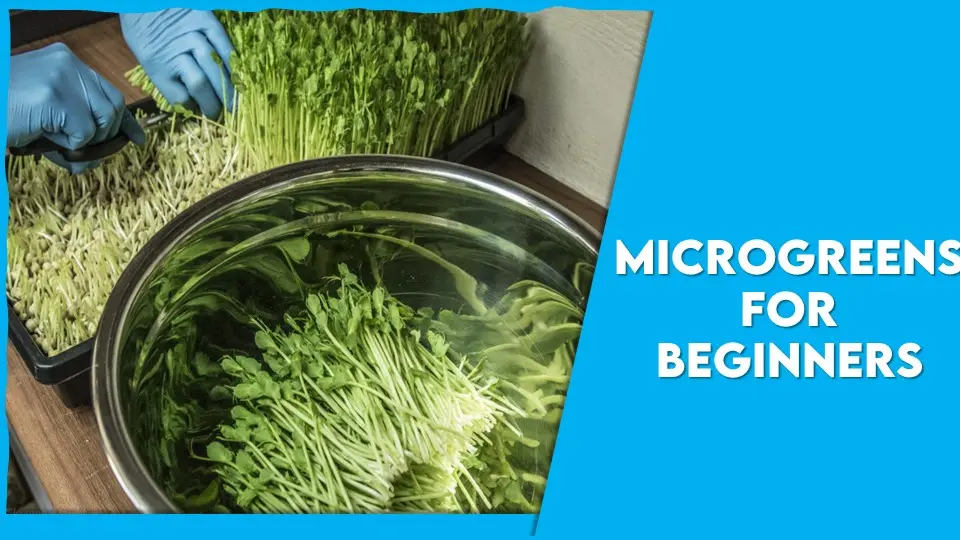Do I Need A License To Sell Microgreens – Things To Be Noted
The rapid expansion of the microgreens market supply has agitated the interest of many entrepreneurs and “green” enthusiasts yearning to trade their passion for microgreens and thus make a profit. Microgreens may present a prosperous business opportunity, except that the licensing requirement might be a great obstacle to business success.
In this article, our main task is to sort the kaleidoscope of rules and regulations on the sale of microgreens. We will unravel the intricate process of licensing, tackling the ins and outs of local laws, and regulation matters as well as give the right direction and guidelines to individuals looking to be successful fellows in the world of the microgreens market. This article mainly focuses on Do i need a license to sell microgreens.
Do I Need A License To Sell Microgreens
The query of do i need a license to sell microgreens will be answered by the end of this article. To start doing business with microgreens, it is very important first to do research on legal regulations and then comply with them, which frequently means acquiring permits or licenses from bodies such as health departments.
The securing of a food handler permit, a general business license, and compliance with food safety standards, of correct labeling, and zoning requirements will constitute just a few of the concerns they will face. Also, you may get your income tax dues by registering and taking liability insurance. The requirement for complete understanding and compliance with these regulations is crucial since any lack of knowledge can result in breaking the law and pose health risks diseases to customers.
Licenses Needed To Sell Microgreens On Commercial Basis
Basic Registration
The legislation should allow for small food businesses with an annual turnover below a defined limit to, for example, have an estimation of their environmental impact rather than pay for a full EIA.
State License
For instance, medium-sized food businesses that make only one type of product and cater to one state market.
Central License
The main target group is big-size food firms working with state borders or transnational import/export issues.
Local Municipal Corporation License
The food businesses are obliged to get a license or a permit from the municipal corporation or urban local body in which kay the business is situated. This license generally is good enough when it comes to ensuring that the business is compliant with local health and hygiene regulations.
Shop and Establishment License
A brick-and-mortar business selling food items could seek permission from the local department in the form of a shop and establishment license from the state government authority. This license governs, for instance, the working time, employment terms and conditions as well as safety, among others.
Health/Trade License
The city authority in charge of trading may demand businesses to develop specific health and trade licenses to comply with the regional regulations on health and safety hygiene relating to food preparation and handling.
Fire Safety License
To obtain the fire and safety license, the size and nature of the food business are considered. This step will take you to activate the rules of the fire and safety regulations.
Food Safety Supervisor
The provision of a trained food safety supervisor may be required of large food businesses in response to the regulation. Mainly, this person ensures that the facility adheres to food safety regulations and hygiene practices including disinfecting products every time they are used.
Why Licensing Is Needed For Microgreens

Food Safety
Microgreens, the same as other food products, can acquire bacteria, pathogens, or contaminations if not cultivated, harvested, handled, and stored correctly. Licensing is a practice where microgreen producers can be observed ensuring that they comply with standards and practices that promote food safety.
These requirements involve hygiene, sanitation as well as killing pests in addition to construction of each production stage, including the involvement, of proper handling. Favoring to obtain a license, microgreen producers take an obligation to ensure the hygiene level, this reduces the risk of foodborne illnesses and the consumers will be safe to enjoy the produce.
Regulatory Compliance
The government regulates the creation and distribution of foodstuff by employing means that would help establish public health and the practice of fairness in the food industry. Licensing for microgreens keeps products generated from within regulations and standards, hence, it’s the food safety authorities’ prerogative to ensure the quality and safety of such consumables. In such cases, this may require compliance with regulations about labeling, packaging, traceability, or documentation of the production methods.
The license acquisition by microgreen producers signifies their determination to an undersigned responsibility that in this way builds the trust of consumers and authorities too.
What Food Safety Practices Should Be Followed

Hygiene and Personal Cleanliness
Makes sure their employees maintain good hygiene habits, which include hand-washing, at least once every hour with soap and water. Make available appropriate clothing related to safety, such as gloves and hairnets, for the sake of prevention of contamination. In the case of workers with disease or fresh wounds, no one can process microgreens even by contact.
Sanitation of Equipment and Facilities
Conduct frequent cleaning and sanitization of all tools at the production site as well as all harvest tools and mixing areas used for packaging microgreens. Make sure to use food-grade cleansers and sanitize your hands and surfaces with antimicrobials and disinfectants to cut off the surfaces from bacteria and pathogens. Set up a sanitation schedule where all the facility’s areas will be highly maintained and regularly cleaned.
Water Quality and Irrigation
Ensure the use of well water or other water of good quality for irrigation to minimize contamination. Perform regular tests on water sites to detect impurities and maintain the irrigation systems to avoid pathogen build-up.
Seed Selection and Handling
Acquire seeds of good fame from valid sources with great caution for quarantine and make sure they are free from harmful substances. Ensure the seeds you save are stored in clean, dry conditions to avoid the presence of mold/contamination. Handle the seeds delicately to prevent the likelihood of cross-contamination from occurring during the medium-germ and planting processes.
Growing Conditions
Keep track of the surrounding area’s temperature, humidity, and ventilation to give the growing microgreens an ideal environment for growth. Implement pest control techniques to avoid the incidence of infestations and reduce the application of harmful chemicals. To ensure the safety of the growing areas, keep these areas clean and free from any garbage that could be pests or pathogens habitat.
Harvesting and Handling
It is desired to harvest the microgreens in their proper development stage to achieve the ideal flavor, texture, and nutritional value. Using cleansed and sterilized harvesting implements, eliminates plant damage and cross-contamination as well. Manage microgreens that are pulled up from the ground graciously to not subject them to bruising or crushing which may destroy their tender leaves or invite bacteria.
Packaging and Storage
Provide packaging materials that are free from chemical pollutants, suitable for microgreens, and safe for consumption. Make sure that each packaged bag of microgreens supplies the consumer with information revealing the variety of greens, their harvest date, and the possible handling instructions given. Store packaged microgreens away from dust, heat, and winds by storing them in a clean and cool place to prolong freshness and extend the product’s shelf life.
Traceability and Record-Keeping
The best way to do this is to keep the book of seeds regarding the origins, acquiring methods, crop management, date of harvest, as well as package processing. Create a traceability system as a fundament for the identification and tracking of microgreens at each point of production and distribution. Maintain the documents on the quality control job, inspection, and any issues relating the food safety.
Conclusion
This is all about the article do i need a license to sell microgreens. Since entrepreneurs need to be aware of local regulations and laws, they must investigate and follow them accordingly. Besides posing the risk of being legally responsible, not having the required permits makes consumers undermine your business and the existence of the company.
These microgreens seller entrepreneurs establishing the required licenses and permits proactively show that they commit to professionalism, food safety, and following industry standards. The license might differ from one country to the other and one cannot stick to the above-mentioned licenses and regulations. There might be a few standards that are specific to each state that can be adopted and the acceptance can be obtained accordingly.
Because of this, in the long run, these microgreens businesses will be able to thrive in the market. Moreover, the push through the regulatory maze is supposed to be the step for the guarantee of the security of the consumers.
Getting licenses for the business may, often, entail meeting certain compliance requirements related to the proper handling of food, sanitation, and product labeling because those are crucial steps in the preservation of the microgreen quality chain. Sellers focus on compliance to avoid related risks and at the same time strive to build and increase their good reputation and development in the microgreens industry, while consumers’ trust and their businesses are booming.







